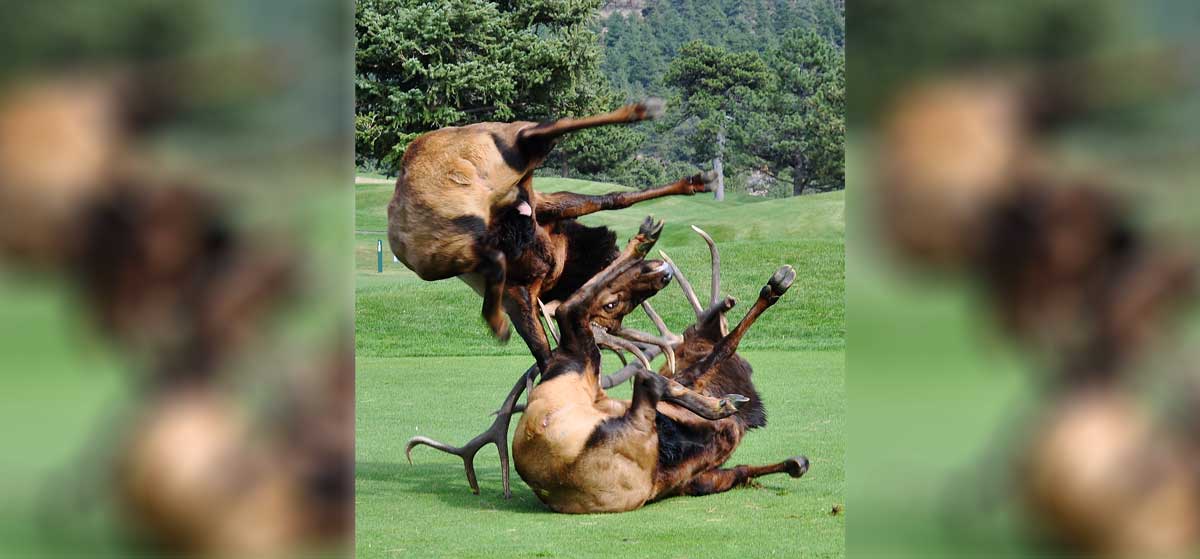It’s rare, but given the application of sufficient force, it does happen. As any student of jujitsu knows, the crux lies in leverage—using the opponent’s strength and motion against them. RMEF member Dan Fischer captured this definitive example on the 7th green of northern Colorado’s Estes Park Golf Course last September. With several big bulls screaming and rampaging nearby, Fischer selected a Nikon D90 instead of a 9 iron.
He first encountered these bulls near the tee box. The pair engaged in a ferocious running battle down the fairway, and he was able to parallel them and keep shooting photos from the cover of the pines. Combat reached its apogee on the green. As the bulls slammed together, the larger of the two slipped and went down. No bull ever wants to be on his back. A dagger-sharp tine to unprotected vitals can be instantly fatal. But his adversary was in no position to capitalize, given that he was upside down in midair four feet above the green.
When their antlers collided, the pivot of the falling bull combined with the smaller bull’s momentum to execute a flawless slip-and-flip throw. Astute observers will note that the bigger bull’s right beam is broken just above the second point. Fischer reports that it was already snapped when the fight began. So the bull executed his throw with only one full beam. Stunned by his reversal of fortunes, the smaller bull (himself no slouch) withdrew to reassess the situation.
A person versed in basic physics could doubtless devise an equation to measure the force of two 700-pound bulls, each running 35 mph, and then factor in the torque exerted by a sudden 180-degree twist. As someone who took Math for Journalists, all I can say is it generated enough thrust to put eight hooves in the air in a hurry and prove that, at least for a little while, elk can fly.
Elk NetworkCan Elk Fly?
Conservation | August 14, 2018

Latest Content
Coming Full Circle in the Show Me State
Passion and perseverance go a long way. Just ask Rocky Mountain Elk Foundation volunteers from the state of Missouri. They know it because they live [...]
Answer the Call – Honoring Volunteers
Below is a reprint from the July-August 2024 issue of Bugle magazine. Merriam-Webster defines ‘volunteer’ as a person who willingly undertakes or expresses an enthusiasm [...]
Texas Volunteers Help Ensure the Future of Hunting
Texas Volunteers Help Ensure the Future of Hunting Texans are known for their bold spirit. That enthusiasm carries over for Rocky Mountain Elk Foundation volunteers [...]